
Big Town, Insistent Revolutions: On the Rich, Kaleidoscopic Lives of New Yorkers in Literature
Vince Passaro Recommends Great Books About the Big Apple
“He entered the park at the North Gate and swallowed mouthfuls of the heavy shade that curtained its arch. He walked into the shadow of a lamp-post that lay on the path like a spear. It pierced him like a spear.”
The above is from the beginning of the second chapter of Nathanael West’s Miss Lonelyhearts, a brief and brilliant novel set in late-Prohibition New York; the arch and lamp-post mentioned belong to Washington Square Park. I remember, in my twenties, reading this sentence for the first time and thinking, ah—that’s how to do it. That’s how metaphor ought to work. You put it out there, and then you use it. It should leave the reader bleeding.
For ten years at NYU, I taught a freshman seminar called “The Writer in New York” in which the newly arrived students were urged to grapple with the city as literary character, literary machine, psychological event. The syllabus was chronological and most years West’s Miss Lonelyhearts was the first novel in it (in early years I started with Stephen Crane and Edith Wharton and Henry James but it was a course primarily for people who wanted to be writers and in the end, I leaned toward more jagged and contemporary texts).
However, the very first book we read every year was not a novel and was introduced well out-of-sequence: David Wojnarowicz’s amalgam of fiction, memoir, journal, impressions, called Close to the Knives. It was a requirement of the course to keep a journal and hand in pages weekly; the goal was to be daring and to be fully engaged, and no one brought more of either of these qualities to their writing about daily life than did Wojnarowicz.
Any course about the 20th-century literature of New York will have to dwell on matters of violence, sex, class, and money or the lack of it; New York for a long time was a town of cash and bodily fluids. Wojnarowicz saw intimately, intricately, the relation among all these. He died of complications from AIDS in 1992. His beloved Peter Hujar, the great photographer of New York life in the 70s and 80s, had died five years before and his road to death constitutes one section of the book. Another section, where Wojnarowicz goes on the road, is titled: “In the Shadow of the American Dream: Soon All This Will Be Picturesque Ruins”—one of a number of unnerving, prescient lines in the book.
In a journal entry extracted and placed later in the fragmentary text, Wojnarowicz recounts a moment of his own driven, youthful desire, going into a fetid, dark hangar alongside the Hudson River, one of the derelict structures among the piers and abandoned warehouses that used to line the Hudson River downtown, frequently used for anonymous sex. There, despite his willingness, he is essentially raped, by a man with a handkerchief full of ether. “Deep in the back of my head I wish it would all burn down, explode in some screaming torrent of wind and flame, pier walls collapsing and hissing into the waters. It might set us free from our past histories. Once it was all beautiful rooms that permitted living films to unwind with a stationary silence that didn’t betray the punctuations of breathing, the rustle of shirts and pants sliding.”
Sufficient beauty and erotic power to “set us free from our past histories”: New York does this if you go along with it. Indeed it propels us forward; it changes faster than we want it to do. I’m about to publish a book (Crazy Sorrow, Simon & Schuster, Sept 14th) that takes place over 40 years in New York City, from 1976 to 2016, in part the culmination of all those days contemplating the literary power of the place. Yet I fear I’ve hardly done it justice as a character, the city: the crisscrossing vectors of so many narratives, the slanted light on the gray streets late in the afternoon, the rapid movement of our darkened silhouettes in this glancing hard light, and all our insistent revolutions. One can only try.
And here are some others who’ve tried, a few of my favorite books set in, and about, New York.
*
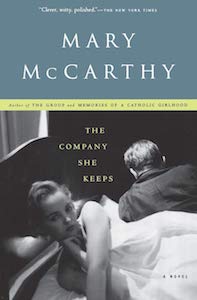
Mary McCarthy, The Company She Keeps
This is the critic McCarthy’s earliest foray into fiction and the stories (though she called the book a novel, it isn’t) are elegant and audacious. How a supremely intelligent (and sexually liberated) young woman made her way after college in the New York of the late 1930s, is seen most vividly in the famous story “The Man in the Brooks Brothers Shirt,” and with great depth and subtlety in her long surgical examination of the magazine and literary world, called “Portrait of the Intellectual as a Yale Man.”
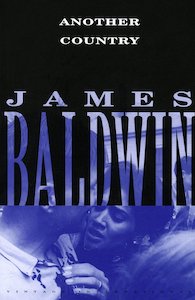
James Baldwin, Another Country
We used to read pieces from the Harlem Renaissance and Invisible Man in the course, but there is something that feels very close and right to me about Baldwin’s voice. This novel captures Harlem in a particularly pointed but elegant way, without the psychological burdens brought to the task by his own earlier work or by Ellison’s. A beautiful book.

Norman Mailer, An American Dream
Mailer often worked close to the edge, and here he was working as close to the edge as possible. It is the story of a man who marries into a corrupt political/financial family unmistakably modeled on the Kennedys; it was written in installments on monthly deadline for Esquire in late 1963 and through 1964, right in the teeth of national mourning for the slain president. An amazing, daring, dark work, set over three days in NYC, with writing sometimes sublime and other times ridiculously over-the-top as only Mailer could be. The first lines, so you can’t mistake the themes: “I met Jack Kennedy in November, 1946. We were both war heroes and both of us had just been elected to Congress.” It flies from there. Almost literally. With one of American literature’s great, weary, existential, NYC Irish cop.
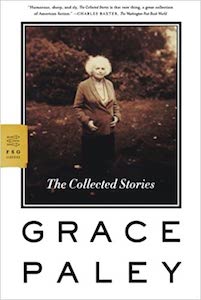
Grace Paley, The Collected Stories
This immensely valuable, historic contribution to American literature did not win the National Book Award for 1994, much to my outrage and chagrin. (Instead, the award went to an extended piece of schtick by William Gaddis about a lawsuit involving a sculpture and a dog.) The New York of Paley’s stories is a deep, vivid, multi-borough (largely Brooklyn) camera lens on the life of the old New York ethnic (largely Jewish) working class. She is a camera lens if camera lenses could have the kind of tight, blade-sharp irony Paley can bring. If you have not read her one-and-a-half-page story, “Mother,” you have not seen an actually perfect piece of fiction.
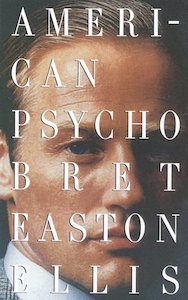
Bret Easton Ellis, American Psycho
The older I get the more I admire this book. Ellis was only 25 when he wrote it; instead of editing it, his publishers, hungry for glamour and sub-rights sales, just xeroxed a hundred copies of it to send around Hollywood and ended up getting denounced by a thousand outraged petitions, the National Organization for Women, and the New York Times Book Review (in an unheard-of, three-month-early, front-page attack titled “Kill This Book”). The publisher heroically dropped the book. (That publisher was Simon and Schuster, mentioned above.) The recently passed, much-missed Sonny Mehta, recently arrived from England to be publisher of Alfred A. Knopf, Pantheon and Vintage, picked the book up for $75,000 and, once he’d taken the names of Jay McInerney and American Express from it, the first for friendship reasons, the second for legal ones, rushed it to print, where it has stayed ever since. Ellis captured the viciousness behind the 1980s mindless love of money and consumption with a force no other writer ever managed to bring to bear. It’s a furious, astonishing book.
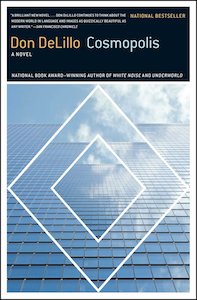
Don DeLillo, Cosmopolis
Not DeLillo’s most famous book, it nevertheless delivers perfectly on its conceit, a late 90s wunderkind banker, not yet 30, in his white stretch limo, a young man with no end of technology in his car and immense power over global currency markets, crossing Manhattan on 47th Street from east to west one day to get a haircut. It’s a wild and brilliant ride and takes all day. The book has an appearance by Bill Clinton, a Sufi rapper funeral, a labor strike accompanied by the big blow-up plastic rat swooning on the sidewalk and actual dead rats to heave at the rich—as well as a ghostly young wife and an assassin. What could go wrong?
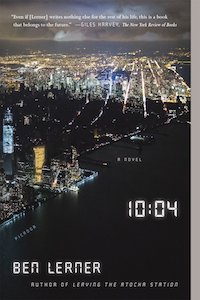
Ben Lerner, 10:04
I started teaching this novel late in the run of the course. Lerner is the most complex and interesting American writer of his generation and 10:04 is a textbook version of what’s come to be called autofiction, a kind of minute-by-minute, subtly patterned chronicle of the life of a man much like the author. Absolutely the best post-2010 New York novel I know of. He is right on top of the realities of a generation utterly cut loose from tradition, in a world that is physically collapsing.
*
Books about New York besides the above that shouldn’t be missed: Edith Wharton’s The Age of Innocence, by far her greatest book; William Burroughs’s Junky; the Swiss writer Max Frisch’s Montauk… Uptown, you’ll want Jazz and Invisible Man, as mentioned earlier, plus Claude Brown’s Manchild in the Promised Land and Oscar Hijuelos’s The Mambo Kings Play Songs of Love (there are many others of course... ).
Two great Brooklyn novels, Hubert Selby’s Last Exit to Brooklyn and Gilbert Sorrentino’s Steelwork. And then, honorable mentions, frequently read in excerpts in that NY course of yore: Stephen Crane’s Maggie: A Girl of the Streets; Henry James’s Washington Square, as well as selections from his memoirs; Wharton’s The House of Mirth (especially the opening scenes with Lily Bart in Grand Central Terminal and then in Selden’s apartment); DeLillo’s Players, or the astonishing Bronx childhood sections of his masterpiece, Underworld. And the remarkable elevator inspections of Colson Whitehead’s best book, The Intuitionist. Plus much, much more. So much. Because this is the big town. And it has a lot to say.
__________________________________
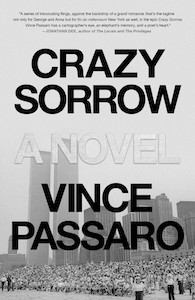
Crazy Sorrow is available from Simon & Schuster. Copyright © 2021 by Vince Passaro.
Vince Passaro
Vince Passaro is the author of the novel Crazy Sorrow. His criticism and essays have appeared in many prominent publications, including Harper’s Magazine, of which he is a contributing editor, The Nation, The New York Times Sunday Magazine, The New York Times Book Review, Elle, Salon, and others, along with short fiction in such national magazines and literary journals as Esquire, GQ, Open City, Agni, Story, Boulevard, and Quarterly West.



















